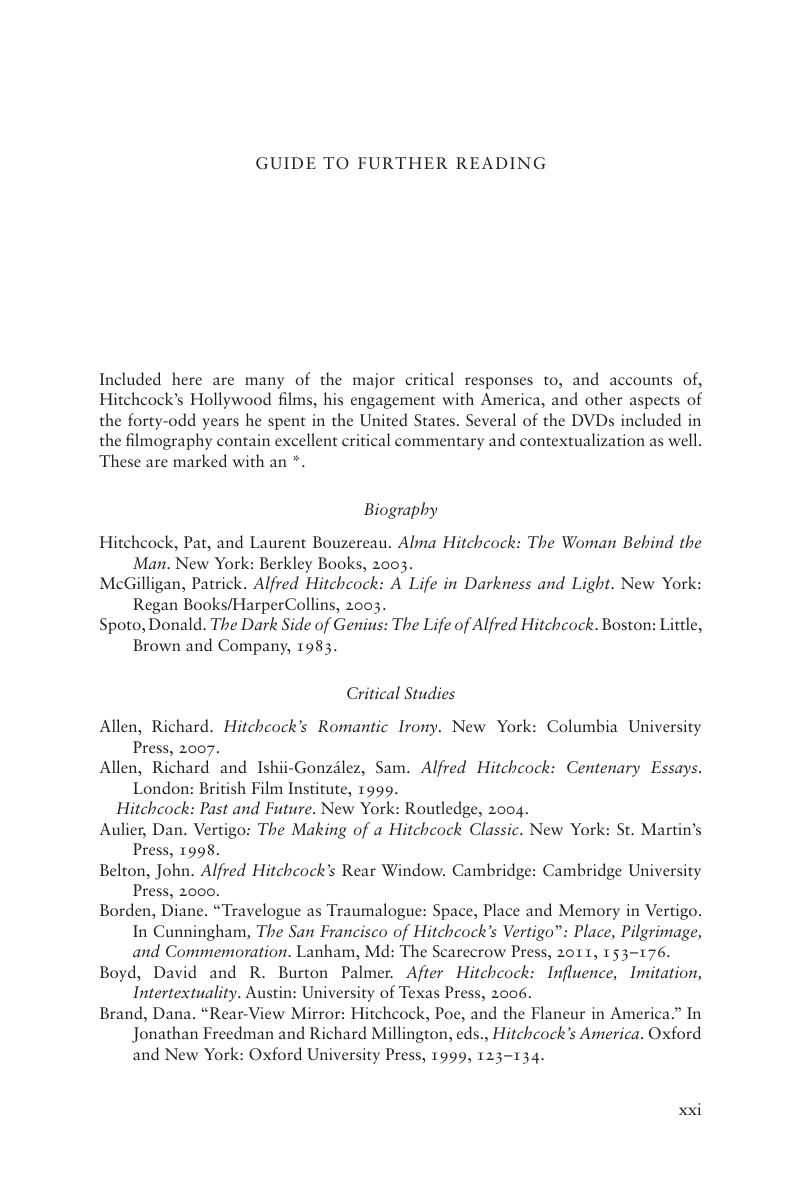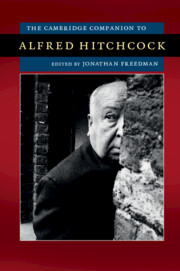Book contents
- The Cambridge Companion to Alfred Hitchcock
- The Cambridge Companion to American Studies
- The Cambridge Companion to Alfred Hitchcock
- Copyright page
- Contents
- Illustrations
- Notes on Contributors
- Acknowledgments
- Chronology
- Guide to Further Reading
- Filmography: Hitchcock’s American Films
- Introduction
- Part I Hitchcock Encounters America, America Encounters Hitchcock: Roots and Offshoots
- Part II Hitchcock: Sexualities, Genders, Theories
- Part III Hitchcock’s American Films: Some Case Studies in Form and Content
- Part IV Hitchcock Beyond Hitchcock
- Index
- References
Guide to Further Reading
Published online by Cambridge University Press: 05 August 2015
- The Cambridge Companion to Alfred Hitchcock
- The Cambridge Companion to American Studies
- The Cambridge Companion to Alfred Hitchcock
- Copyright page
- Contents
- Illustrations
- Notes on Contributors
- Acknowledgments
- Chronology
- Guide to Further Reading
- Filmography: Hitchcock’s American Films
- Introduction
- Part I Hitchcock Encounters America, America Encounters Hitchcock: Roots and Offshoots
- Part II Hitchcock: Sexualities, Genders, Theories
- Part III Hitchcock’s American Films: Some Case Studies in Form and Content
- Part IV Hitchcock Beyond Hitchcock
- Index
- References
Summary

- Type
- Chapter
- Information
- The Cambridge Companion to Alfred Hitchcock , pp. xxi - xxivPublisher: Cambridge University PressPrint publication year: 2015



